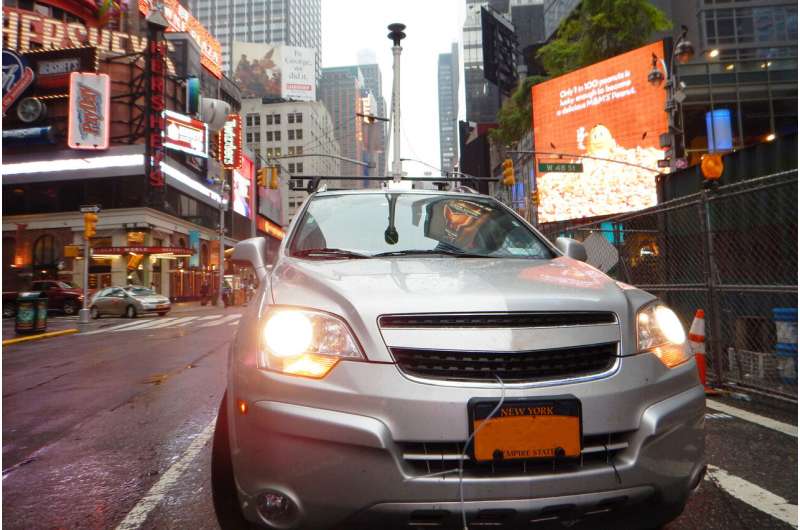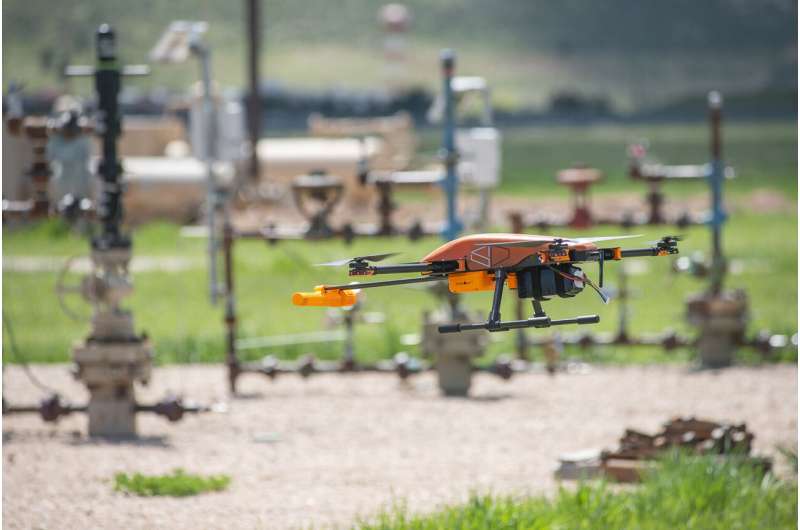Finding and fixing natural gas leaks quickly and economically

As it flows through pipelines from wells to stovetops, natural gas is prone to leaking, threatening not only human safety and health but also the health of the planet.
Over the past 10 years, natural gas leaks and explosions in U.S. residential and commercial neighborhoods have killed 73 people, injured 412 others and caused more than $500 million in property damage. Gas leaks and other emissions throughout the industry emit a third of all human-made methane, a greenhouse gas 36 times more potent than carbon dioxide. Researchers at Stanford and elsewhere are looking for fast and affordable ways of detecting leaks throughout the natural gas supply chain in an effort to reduce damage and save lives.
"While a large portion of methane in the atmosphere comes from agriculture and livestock, natural gas leaks are found throughout the gas distribution system," said Stanford professor of geophysics Mark Zoback, director of the Natural Gas Initiative, which funds much of the work at Stanford tracking down and mitigating leaks.
When burned to produce electricity, natural gas releases about half the carbon dioxide per kilowatt-hour that coal does, as well as less sulfur and nitrogen oxides, making it a tempting alternative to coal.
However, the U.S. Environmental Protection Agency estimated that the oil and gas industry emitted approximately 8 million metric tons of methane in 2016—the equivalent of emissions from 43 million cars in a year. A 2014 study by Adam Brandt, an associate professor of energy resources engineering at Stanford, found that such leaks can negate some but not all of the climate benefit of switching from coal to natural gas, as some experts, including Zoback, have advocated.
"Most gas leakage is associated with a relatively small number of large sources. We've got to find and fix the biggest leaks if we want to build a safer, cheaper and less harmful system," Zoback said.
Consumer safety and health
When leaks happen close to urban and residential areas they can cause fires and explosions and pose some of the greatest threats to human safety, in addition to climate effects. Among those working to find these types of leaks are Stanford's Rob Jackson and private-sector scientist Robert Ackley, president of Gas Safety U.S., a Massachusetts leak-monitoring firm.
The two have cruised through urban areas in a car that looks fairly ordinary, except for the strange antenna protruding from its roof. Unknown to onlookers, Jackson and Ackley stare at data on a screen, waiting for the telltale ping to alert them of a gas leak nearby. They use a laser-based methane analyzer and the car's strange antenna, which measures wind speed and direction, to survey leaks.

This type of survey in Cincinnati found that pipeline replacement programs had cut gas leaks by up to 90 percent. While working at Duke University in 2011, Jackson and colleagues discovered 3,000 leaks in Boston in collaboration with Boston University researchers. That mapping eventually led to policy reform in Massachusetts, Jackson said. He later performed a similar study in Washington, D.C., and found twice as many leaks as there were in Boston. He and his team are now working on home and building leak detection methods to document emissions from the curbside.
"Any leak is potentially explosive," he said. "We're trying to help engineer the system to be safer and more efficient."
Our planet's safety
While residential leaks pose risks to human safety, leakage in every piece of the natural gas industrial chain—wellheads, compressors, valves, pumps, gauges and pipe connectors—has serious implications for the climate.
Oil and gas companies want to help reduce the quantity of lost gas due to the associated costs and liabilities. Global fugitive methane costs over $30 billion in lost revenue per year, according to a 2012 study. And just 5 percent of leaks in the production and transport system are responsible for more than half the methane emissions, Brandt found in 2016.
"The gas industry cannot credibly claim to be a responsible player in global sustainability if it continues to emit significant quantities of methane through its operations," Brandt said.
Working with postdoctoral scholar Arvind Ravikumar, Brandt recently led the Mobile Monitoring Challenge—a contest to find the most affordable and accurate ways of detecting natural gas leaks—along with colleagues from Stanford, Colorado State University and the Environmental Defense Fund.
In the course of the contest last year, drones whizzed overhead, trucks rumbled by and helicopters zoomed through the sky at controlled testing facilities in Fort Collins, Colorado, and Sacramento, California.
Results of the competition are expected to be published soon, and when they are, researchers at Stanford and beyond will have a new tool to help find and stop dangerous natural gas leaks at the wells and pipelines and close to homes.
Provided by Stanford University




















